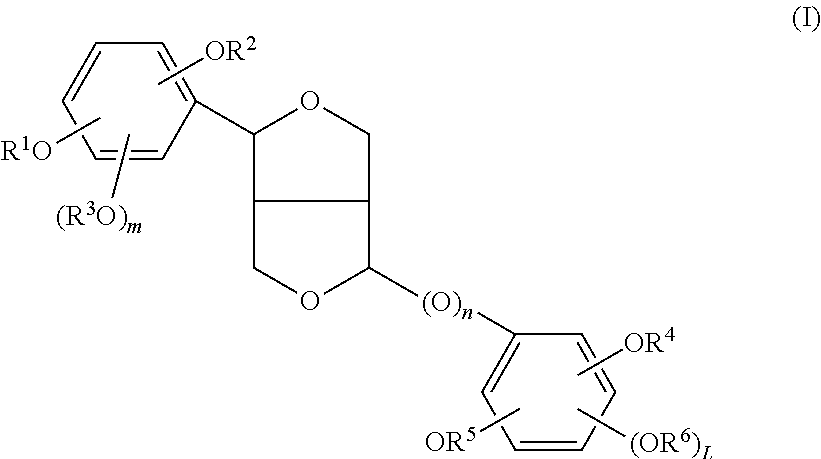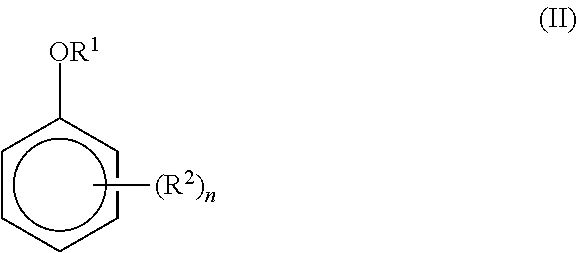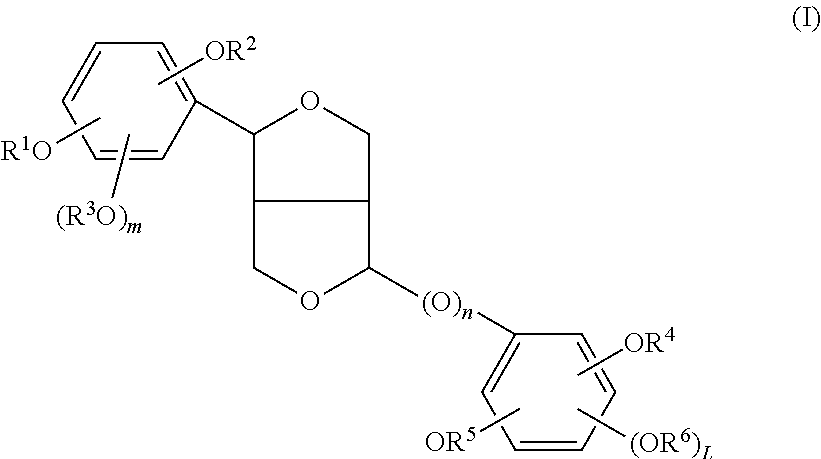Dihomo-gamma-linolenic acid-containing microbial oil and dihomo-gamma-linolenic acid-containing microbial biomass
a technology of gamma linolenic acid and microbial oil, which is applied in the direction of anti-noxious agents, fatty oil/fat refining, immunological disorders, etc., can solve the problem of dgla generation in a small amount, difficult separation of dgla from ara, and scarce commercial production of dgla-rich microbial oil. achieve the effect of lowering the content of arachidonic acid
- Summary
- Abstract
- Description
- Claims
- Application Information
AI Technical Summary
Benefits of technology
Problems solved by technology
Method used
Image
Examples
example 1
Effect of Various Types of Δ5 Desaturase Inhibitor on Fatty Acids Produced by Microbial Mass: 1
[0146]Five plate culture media, namely Plate Culture Medium A containing no added Δ5 desaturase inhibitor, Plate Culture Medium B to which was added 0.005% by weight sesamin, Plate Culture Medium C to which was added 0.01% by weight sesamin, Plate Culture Medium D to which was added 0.02% by weight sesamin, and Plate Culture Medium E to which were added 0.01% by weight sesamin and 0.01% by weight 2-amino-N-(3-chlorophenyl)benzamide, were prepared according to the product instructions for Potato Dextrose Agar Culture Medium (commercial product name; Nissui Pharmaceutical Co., Ltd.), excepting the addition or non-addition of the mentioned Δ5 desaturase inhibitor(s) to the potato dextrose agar medium so as to obtain the listed concentration. The size of each plate culture medium was the same, i.e. 90 mm diameter and 5 mm thickness.
[0147]Each of Plate Culture Media A to E was inoculated using ...
example 2
Effect of Various Types of Δ5 Desaturase Inhibitor on Fatty Acids Produced by Microbial Mass: 2
[0160]In a corrugated Erlenmeyer flask of 500 mL total volume, 100 mL of a culture medium (pH 6.0) including 2% of glucose and 1% of yeast extract was added, and then 4 types of liquid culture media were prepared, namely, Liquid Culture Medium F with no added Δ5 desaturase inhibitor, Liquid Culture Medium G with 10 mg of sesamin added, Liquid Culture Medium H with 10 mg of 2-amino-N-(3-chlorophenyl) benzamide added, and Liquid Culture Medium I with both 10 mg of sesamin and 10 mg of 2-amino-N-(3-chlorophenyl) benzamide added. An I-26 Stackable Shaker (manufactured by New Brunswick Scientific) was used as the shaking culturing equipment.
[0161]After 15 minutes of sterilization of the Liquid Culture Media F to I at 121° C., 1 mL of the pre-cultured liquid culture medium of SAM 1860, mutant strain of Mortierella alpina, was inoculated into the respective liquid culture media and culturing with...
example 3
Effect of Various Types of Δ5 Desaturase Inhibitor on Fatty Acids Produced by Microbial mass: 3
[0166]A one litre (1 L) jar fermenter equipped with disc turbine type agitator blades in two stages was provided. The positions of the agitator blades in the jar fermenter were adjusted so that the relationships between the positions of the agitator blades and the liquid surface of the liquid culture medium (500 mL) contained were as follows: ratios of “distance from culture vessel bottom to agitator blade of the lower stage”: “distance from the agitator of the lower stage to the agitator of the upper stage”: “distance from the agitator of the upper stage to the culture liquid surface”=4:7:15.
[0167]500 mL of a culture medium (pH 6.0) containing 2% glucose and 1% yeast extract was placed in each of four 1 L jar fermenters and 4 types of liquid culture media were prepared: Liquid Culture Medium J with no added Δ5 desaturase inhibitor, Liquid Culture Medium K with 50 mg of added sesamin, Liqu...
PUM
| Property | Measurement | Unit |
|---|---|---|
| weight ratio | aaaaa | aaaaa |
| temperature | aaaaa | aaaaa |
| temperature | aaaaa | aaaaa |
Abstract
Description
Claims
Application Information
 Login to View More
Login to View More - R&D
- Intellectual Property
- Life Sciences
- Materials
- Tech Scout
- Unparalleled Data Quality
- Higher Quality Content
- 60% Fewer Hallucinations
Browse by: Latest US Patents, China's latest patents, Technical Efficacy Thesaurus, Application Domain, Technology Topic, Popular Technical Reports.
© 2025 PatSnap. All rights reserved.Legal|Privacy policy|Modern Slavery Act Transparency Statement|Sitemap|About US| Contact US: help@patsnap.com



